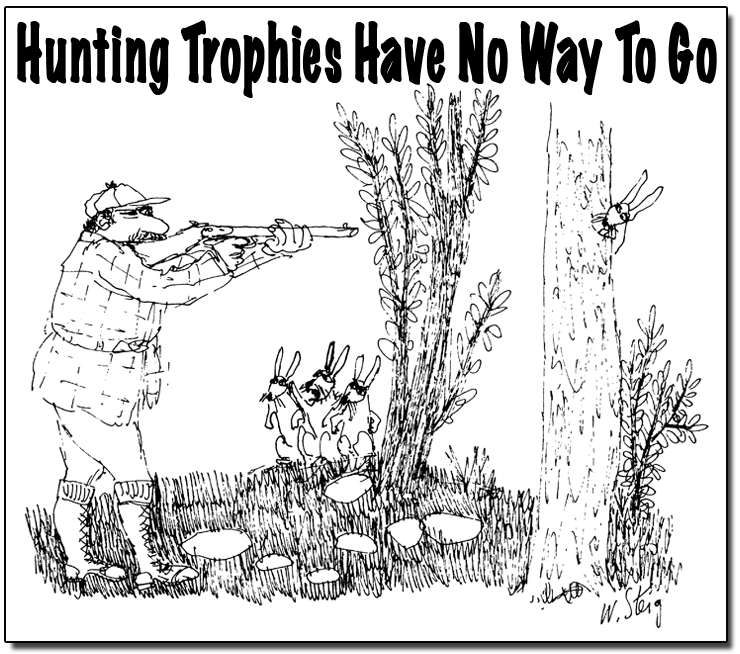| 
On May 15, 2015, the British publication
The Economist featured an article titled “You kill it,
you carry it” dealing with the issue of trophy hunting in Africa
and, sidelining on the logistical aspects of this business, how to get
that freshly hunted trophy back home.
In a time when preservation of nature
and protection of endangered species is on most people’s conscience,
who could disagree with opposing this trade? A simple look at comedian
Ricky Gervais’ facebook photo stream will show you he has made it
his business to call out each and every trophy hunter who dares post a
photo with his or her prize.
Illustrating The Economist
article with a smiling man giving the thumbs up, his scoped gun propped
against the belly of his “prize”—a dead giraffe—can
elicit only one response from the reader: disgust, and utter disbelief
that people like this are still around.
The Economist points out
that “examples of multinational companies forgoing business on purely
ethical grounds are rare.
“Despite fine words, corporations
are by nature profit-maximisers,’ The Economist wrote.
“Their remit is to make money
without stepping over the law; separating right from wrong, they often
argue, is the job of governments and regulators.”
The Economist also stated:
“there are occasions when a perfectly legal practice is so unpalatable
to the public, and any association with it so damaging to the brand, that
morality is difficult to ignore.”
The Economist notes that
British Airways stopped carrying animals for scientific experiments in
2005 despite jeopardizing lucrative pharma business, and South African
Airways (SA) has just embargoed transporting hunting trophies altogether
after alleging some customers had misdeclared items such as illegally
obtained elephant tusks.
The Economist explains that
SA’s rationale behind this decision is “to nullify a potential
storm of bad publicity before it arrives.”
A brief check of the facts reveals
that the transport of animals—both dead and alive—is one of
the most tightly regulated items in the air cargo industry today.
The IATA “Live Animals Regulations”—which
in part have been incorporated into local legislation with the demand
for strict adherence to the well-being of the animals by means of so-called
“container requirements” and mandated proper classification
of animals, and scrupulous checks of CITES documentation for any species
flagged as endangered or subject to trade bans—ensure that the well-
being of individual live animals during transport and the preservation
of nature is a number one priority.
Of course, one could argue that at
least in some cases these regulations don’t work all too well, given
the volume of various Customs seizures of illegally transported (thus
undeclared or misdeclared) animals or animal products.
As for hunting trophies, the legal
side of the safari and hunting business is a major—sometimes the
only—source of income for economies, especially in Africa, and the
monies required for the upkeep of wilderness preserves, protection of
endangered species, and public education come from exactly this business.
Whether or not it is moral to shoot
a lion, bear, antelope, or giraffe bred in captivity, and then ship home
the trophy, is another matter.
While IATA together with the IAEA
are campaigning to remove trade barriers, which are ultimately detrimental
to the public health interest, they may have failed to overlook one important
point which was recognized by The Economist:
“Corporations are by nature
profit-maximisers.”
Since the transport of certain special
cargoes—such as temperature-controlled pharmaceuticals, certain
dangerous goods, live animals, and for this example hunting trophies—require
specific (and expensive) training to employees and dedicated facilities
for the storage or handling of these commodities, isn’t the real
question whether or not the volume of animal trophy transport is a viable
commodity worth the costs for the sizable regulatory burdens on such business?
Moving animal trophies in 2015 is
a non-starter to almost everybody.
That kind of business is off the table
and, based on volume, probably not worth the furor.
But since the image here is also the
point, we think the image of transporting laboratory animals and legal
hunting trophies may get confused, at least in public opinion, with the
dastardly trade of rhino horns and various other illegally slaughtered
wildlife.
I remember once sitting with the late
Freddie Laker, much later in the low-cost airline pioneer’s life,
when he was “flying gamblers around in the Caribbean,” as
he described it.
I asked Freddie if he ever carried
air cargo for a living and he recalled:
“Post WWII, when they were doing
polio experiments, we used to operate flights into the UK from India via
converted bombers that were filled with Rhesus monkeys.”
“The flights were long and arduous
and required attendants aboard the aircraft in wet suits as the animals
pissed almost non-stop all the way from India to the UK.”
“The upshot was a cure for polio,”
Freddie said, adding, ”you must never tell that story while I am
alive.”
We continue to attempt to separate
the wheat from the chaff in what we read or are told, but remain convinced
that almost anything that needs to move from one place to another will
find a way to do it, legal or otherwise.
Geoffrey
|





